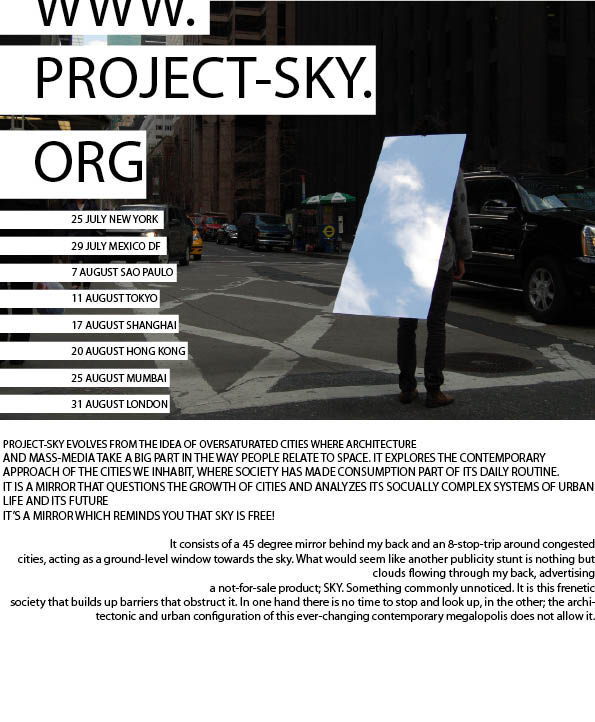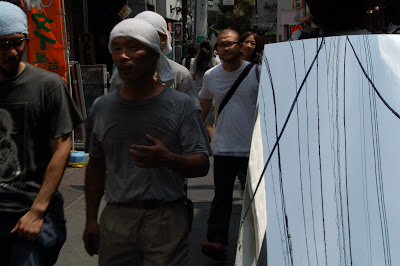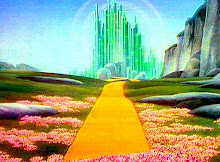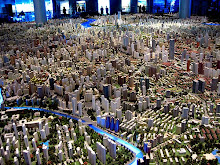
Same old western tale. Cash machines -can't manage with out those massively pricey pounds! Then, Oxford tube stop. Same old, same old. H&M, Gap, Starbucks... If it weren't for that rather satisfying scale, I'd say this was NY. It isn't. This is London, were traffic runs the other way around and working days start much earlier than what we're used to and were more than 300 languages are spoken. A never-finished city, now preparing itself to host the 2012 Olympics. We found cranes everywhere we looked. EVERYWHERE. Wonder when it will all be finished. Seems like it won't soon.



Ver mapa más grande

Shopping bags danced their way through Oxford St .
We tried to understand the consumers point of view. We introduced/camouflaged a video camera in a shopping bag and walked through Oxford St. disguising ourselves as another frenetic shopper.
BUY BUY London...
We gave away sky for the people in Carnaby St. Bond st and in the rest of Soho .




London is the last station of the experiment.
























































